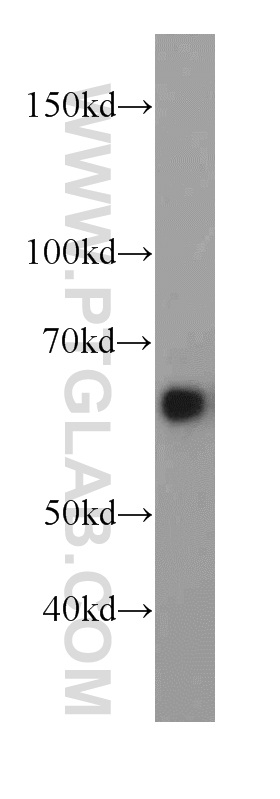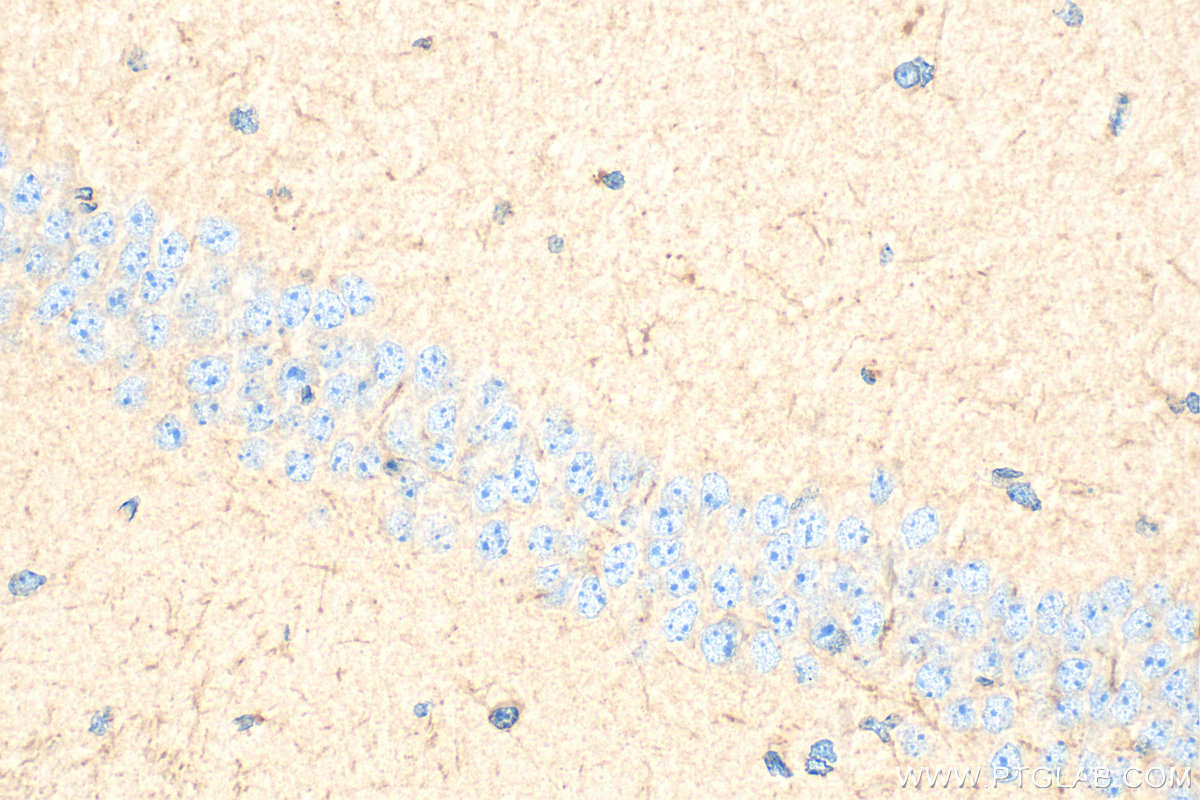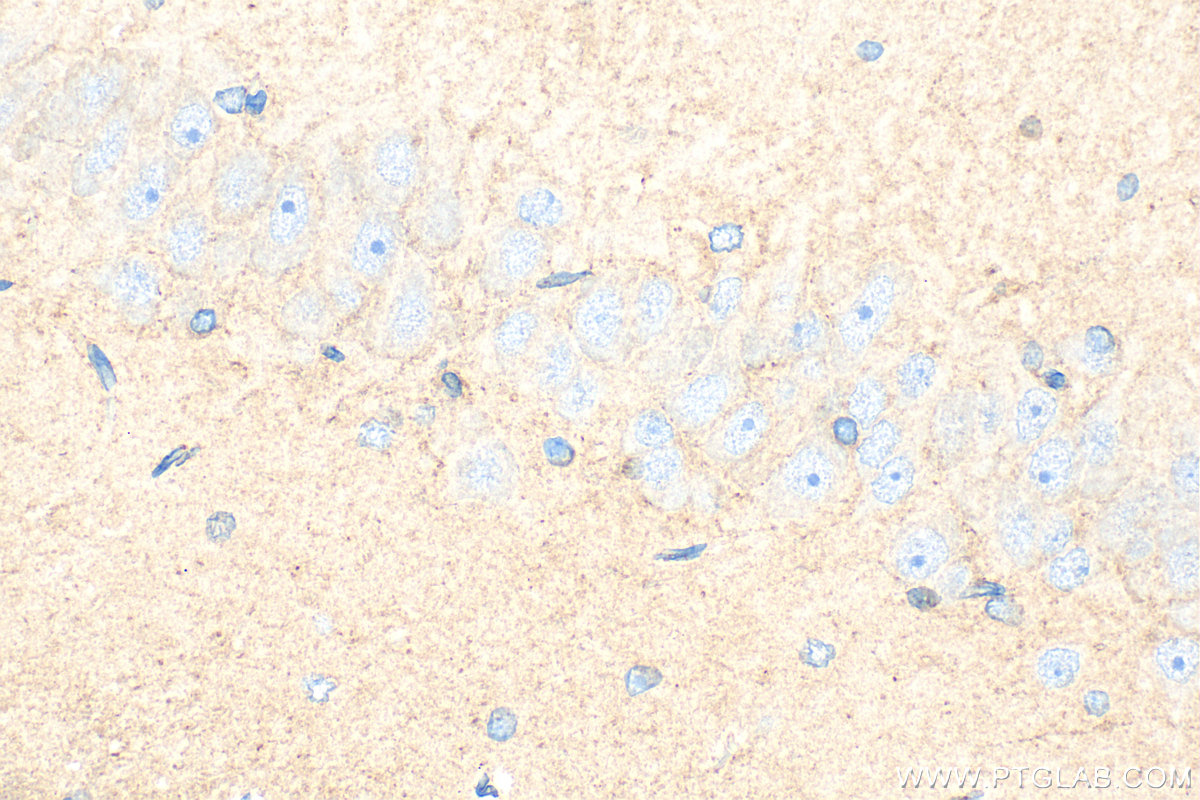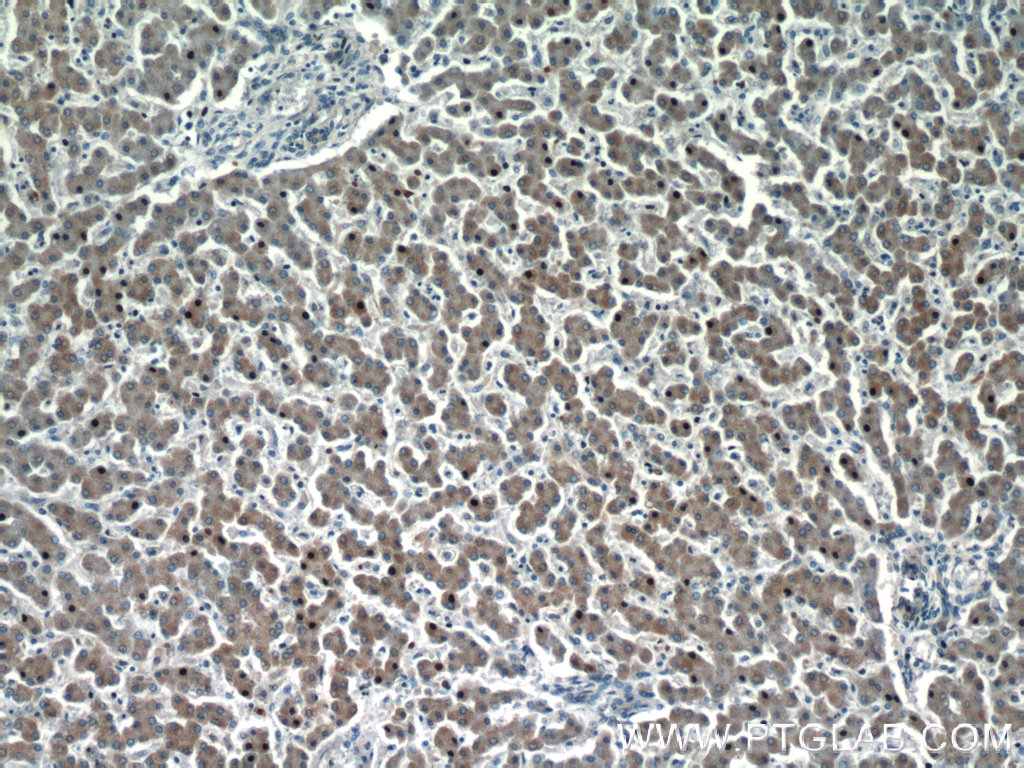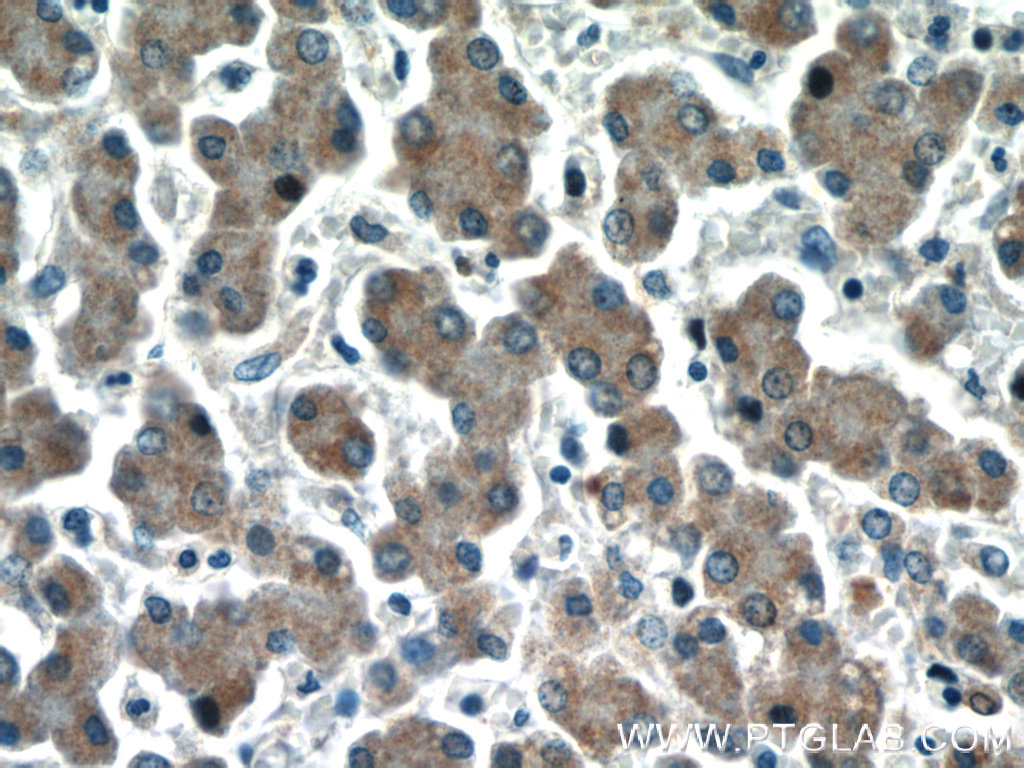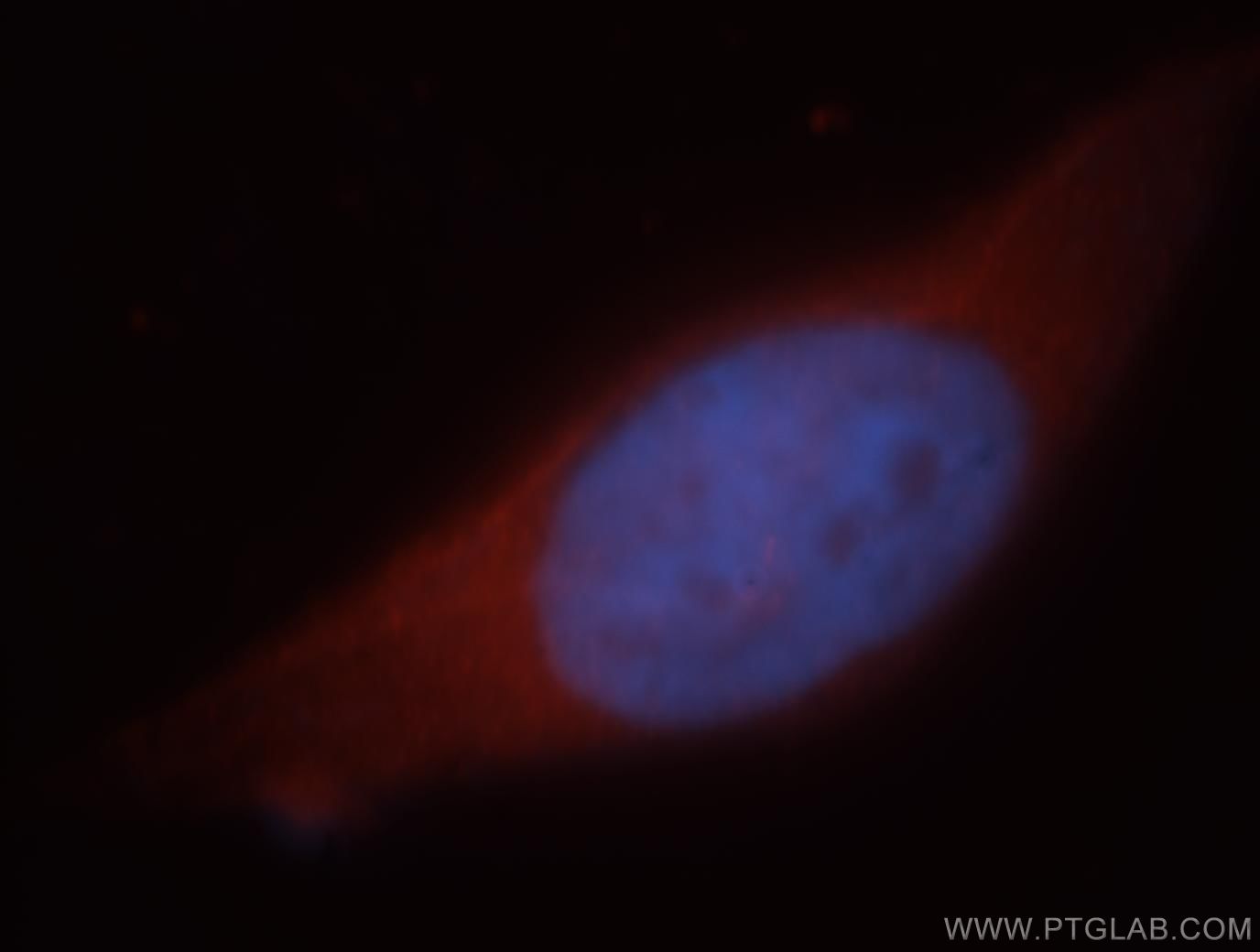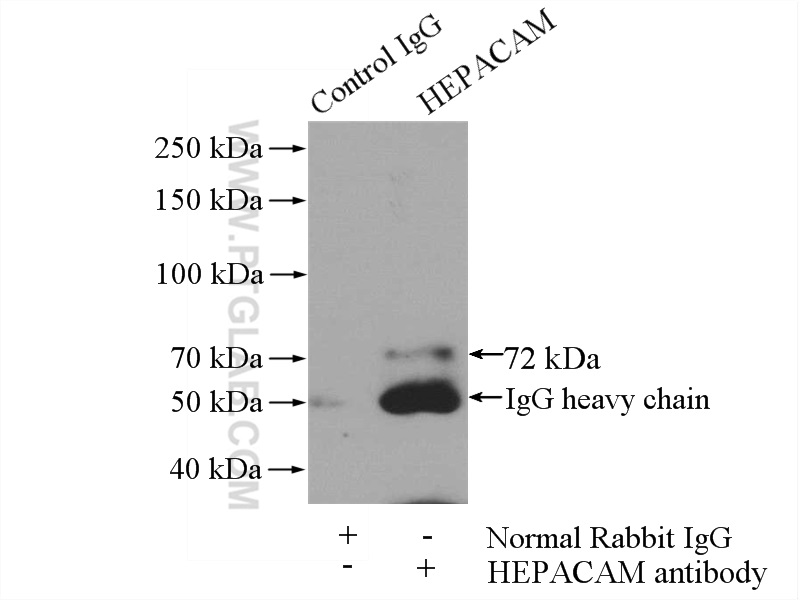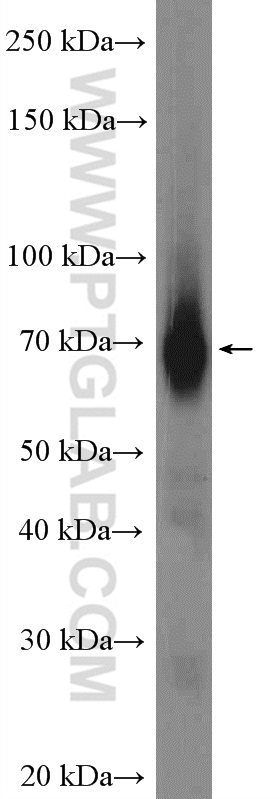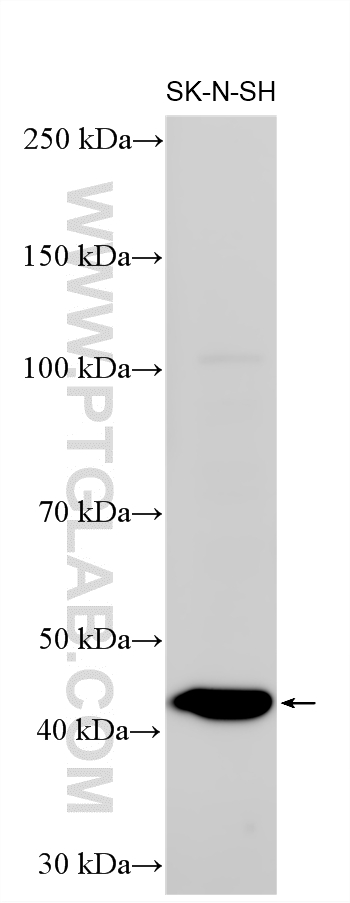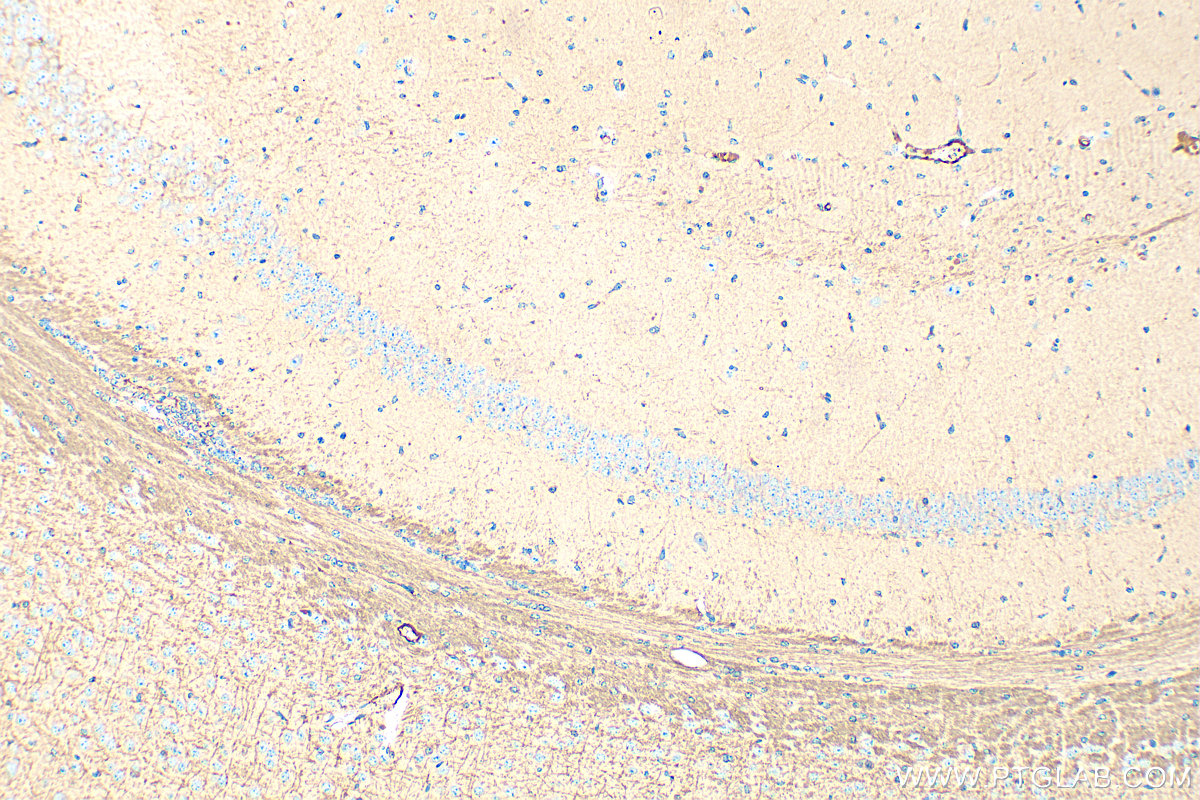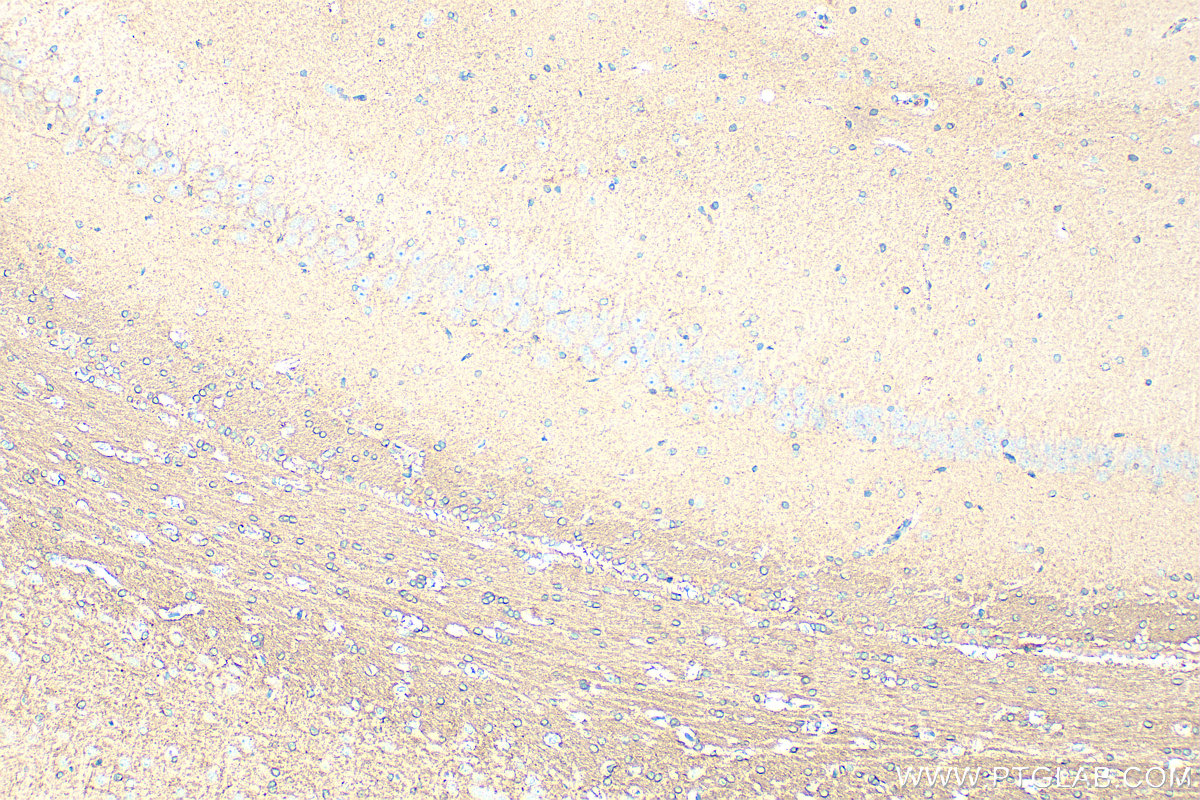验证数据展示
经过测试的应用
| Positive WB detected in | mouse brain tissue, mouse liver tissue, rat brain tissue, SK-N-SH cells |
| Positive IP detected in | rat brain tissue |
| Positive IHC detected in | human liver tissue, mouse brain tissue, rat brain tissue Note: suggested antigen retrieval with TE buffer pH 9.0; (*) Alternatively, antigen retrieval may be performed with citrate buffer pH 6.0 |
| Positive IF/ICC detected in | MCF-7 cells |
推荐稀释比
| 应用 | 推荐稀释比 |
|---|---|
| Western Blot (WB) | WB : 1:500-1:1000 |
| Immunoprecipitation (IP) | IP : 0.5-4.0 ug for 1.0-3.0 mg of total protein lysate |
| Immunohistochemistry (IHC) | IHC : 1:50-1:400 |
| Immunofluorescence (IF)/ICC | IF/ICC : 1:10-1:100 |
| It is recommended that this reagent should be titrated in each testing system to obtain optimal results. | |
| Sample-dependent, Check data in validation data gallery. | |
产品信息
18177-1-AP targets HEPACAM in WB, IHC, IF/ICC, IP, ELISA applications and shows reactivity with human, mouse, rat samples.
| 经测试应用 | WB, IHC, IF/ICC, IP, ELISA Application Description |
| 文献引用应用 | WB, IHC, IF, IP |
| 经测试反应性 | human, mouse, rat |
| 文献引用反应性 | human, mouse, rat |
| 免疫原 |
CatNo: Ag12870 Product name: Recombinant human HEPACAM protein Source: e coli.-derived, PGEX-4T Tag: GST Domain: 36-242 aa of BC104831 Sequence: ITSPVRLIHGTVGKSALLSVQYSSTSSDRPVVKWQLKRDKPVTVVQSIGTEVIGTLRPDYRDRIRLFENGSLLLSDLQLADEGTYEVEISITDDTFTGEKTINLTVDVPISRPQVLVASTTVLELSEAFTLNCSHENGTKPSYTWLKDGKPLLNDSRMLLSPDQKVLTITRVLMEDDDLYSCVVENPISQGRSLPVKITVYRRSSLY 种属同源性预测 |
| 宿主/亚型 | Rabbit / IgG |
| 抗体类别 | Polyclonal |
| 产品类型 | Antibody |
| 全称 | hepatocyte cell adhesion molecule |
| 别名 | glialCAM, Hepatic and glial cell adhesion molecule, Protein hepaCAM |
| 计算分子量 | 416 aa, 46 kDa |
| 观测分子量 | 46-72 kDa |
| GenBank蛋白编号 | BC104831 |
| 基因名称 | HEPACAM |
| Gene ID (NCBI) | 220296 |
| RRID | AB_2279680 |
| 偶联类型 | Unconjugated |
| 形式 | Liquid |
| 纯化方式 | Antigen affinity purification |
| UNIPROT ID | Q14CZ8 |
| 储存缓冲液 | PBS with 0.02% sodium azide and 50% glycerol, pH 7.3. |
| 储存条件 | Store at -20°C. Stable for one year after shipment. Aliquoting is unnecessary for -20oC storage. |
背景介绍
HepaCAM (hepatocyte cell adhesion molecule), also known as GlialCAM, is a single-pass type I membrane glycoprotein of 416 amino acids. It displays a typical structure of immunoglobulin (Ig)-like adhesion molecules including two extracellular Ig-like domains, a transmembrane segment, and a cytoplasmic tail. It has been shown that hepaCAM forms a cis-homodimer on the cell surface, and modulates cell-matrix interaction. It is predominantly expressed in the CNS glial cells. Defects in HEPACAM gene are the cause of megalencephalic leukoencephalopathy with subcortical cysts type 2A (MLC2A). HEPACAM has also been suggested as a tumor suppressor gene.
实验方案
| Product Specific Protocols | |
|---|---|
| IF protocol for HEPACAM antibody 18177-1-AP | Download protocol |
| IHC protocol for HEPACAM antibody 18177-1-AP | Download protocol |
| IP protocol for HEPACAM antibody 18177-1-AP | Download protocol |
| WB protocol for HEPACAM antibody 18177-1-AP | Download protocol |
| Standard Protocols | |
|---|---|
| Click here to view our Standard Protocols |
发表文章
| Species | Application | Title |
|---|---|---|
Hum Mol Genet Megalencephalic leukoencephalopathy with subcortical cysts protein 1 functionally cooperates with the TRPV4 cation channel to activate the response of astrocytes to osmotic stress: dysregulation by pathological mutations. | ||
Br J Cancer Long noncoding RNA HOTAIR regulates the invasion and metastasis of prostate cancer by targeting hepaCAM. | ||
Development Regionally specified human pluripotent stem cell-derived astrocytes exhibit different molecular signatures and functional properties. | ||
Cell Signal Interleukin 6 induces cell proliferation of clear cell renal cell carcinoma by suppressing hepaCAM via the STAT3-dependent up-regulation of DNMT1 or DNMT3b. | ||
Int J Oncol HepaCAM‑PIK3CA axis regulates the reprogramming of glutamine metabolism to inhibit prostate cancer cell proliferation. |

